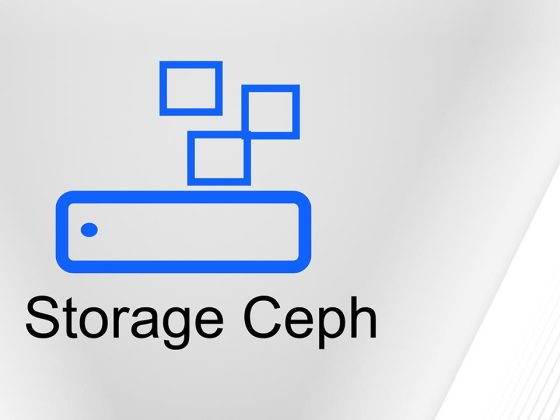The need for a Developer Experience Strategy stems from the increasingly important role of software in the company’s business. To meet the fast‑changing market and ever‑more demanding customers, companies should rely on high‑quality, scalable, secure and resilient software. Such software is the key determinant that separates successful agile organizations from those struggling to maintain a proper position in the market.
The role of the developer has become central. Enterprises are aware of how crucial their skills, productivity, and engagement are to creating great software and, consequently, being able to gain a competitive advantage for the entire company. Therefore, it becomes essential to think in terms of Developer Experience (DevX), as the experience of developers impacts the future of the company.
From our partners:
DevX covers all phases of software development, from architecture design to testing, deployment in production, and eventually monitoring at runtime. Optimizing the 360‑degree experience, which is the goal of the Developer Experience Strategy, means:
- Making daily work challenging and rewarding;
- Removing bottlenecks and frictions;
- Limiting wasted time;
- Reducing errors and repetitive tasks;
- Focusing expertise on high‑value‑added activities.
A Frictionless Developer Experience has positive effects on software quality, time‑to‑market and creativity, but also on talent acquisition and retention, as developers will be more satisfied with their work.
Developer Experience Strategy: what it is and how to design it
Developer Experience Strategy should have a holistic perspective. We speak about a strategic approach to avoid a misunderstanding, which is to identify the Developer Experience solely with tools aimed at simplifying and automating development processes. Such tools are unquestionably very important, but they are only part of the many factors that influence the Developer Experience.
Defining the strategy is the next step after mapping the Developer Journey. It makes it possible to identify all the stages of the experience, but also the elements that condition it, such as processes that need to be reviewed, fragmentation at the tools level, and other cultural and organizational elements. A holistic approach and precise mapping allow identifying the source of problems and understanding what is preventing developers from achieving maximum productivity, efficiency, creativity, and innovativeness.
Only at this point of the Developer Experience Strategy it is possible to evaluate accurately any solutions to be implemented. These solutions may require a cultural and organizational transformation process involving the entire company, or they may be more focused and simply involve the acquisition of new hardware and software tools to facilitate software development and deployment processes.
How to improve the Developer Experience Strategy
The Developer Experience is the result of several elements, and each one has an important impact on the satisfaction of development team members, as well as on productivity, efficiency, and innovation. Below are some useful hints to make your own Developer Experience Strategy more effective.
Working environment and model
A company that wants to attract and retain skilled developers should offer a productive, organized, pleasant, and flexible work environment.
Smart working is flowing toward hybrid models, in which people alternate between being in the office and working remotely. The post‑pandemic concept of “return to presence” is not entirely compatible with work that makes agility, creativity, and autonomy its strengths. A balance needs to be struck that provides the development teams with the necessary flexibility, and at the same time, engages them in the corporate culture and community – the two key engagement drivers. Moreover, the company should invest in continuous learning, foster involvement in conferences and training events, and, most importantly, empower teams by making sure they are aware of their strategic role.
Processes, organization and corporate culture
In the software development world, the adoption of Agile and DevOps methodologies positively affects DevX. Incremental development, frequent interactions with the business, regular feedback and, above all, the creation of small, autonomous and accountable feature teams are processes that help you work more efficiently. In addition to these methodologies, adopting the Docs as Code approach can also have a significant impact on the Developer Experience.
It is then crucial to foster collaboration in all forms, especially for hybrid working models. The corporate communication model should also shift from top‑down principles to a more horizontal, feedback‑based paradigm.
There is often an emphasis on collaboration between Dev and Ops, which is, without doubts, an important element. However, the company needs to take a broader view and break down silos between all different departments, stimulating dialogue and collaboration. To this purpose, it can be successful to adopt an approach inspired by the principles of open‑source communities, such as shared and collaborative production of software and documentation.
Last but not least, it is useful to share project roadmaps and encourage the rise of new ideas through dedicated events, surveys, brainstorming and focus groups.
High‑performance hardware
Sometimes, DevX is adversely affected by the inadequate performance of work tools, first and foremost the notebook. Companies need to provide developers with tools appropriate to the tasks they need to perform: slowing down a process due to the low hardware performance results in avoidable costs, as well as poor engagement. Along with the notebook, the entire workstation should be treated with care: in fact, it is appropriate to equip it with a second monitor and all useful accessories to facilitate the developer’s daily work.
Technologies to make development processes efficient
New development models enable creating scalable, resilient, secure and high‑performance software. The strong evolution in this area has also resulted in a fragmentation of development technologies. Also, critical issues related to IT operations should not be underestimated: if Ops teams do not have the right resources at their disposal, bottlenecks can occur at different stages of the development cycle.
To overcome these challenges, enterprises should equip themselves with tools that simplify and accelerate development processes through the principles of centralization, automation and self‑service. A centralized panel avoids excessive fragmentation in a paradigm based on autonomous teams; automation (together with low‑code practices) cuts down configuration and development time for secondary tasks; and the self‑service approach makes technologies and infrastructure immediately available to development teams. Also, it is essential to produce clear, complete, and accessible documentation.
To achieve these goals, companies can rely on an Internal Developer Portal, a single portal that collects and makes available all the tools and technologies needed to develop high‑quality software. An Internal Developer Portal also improves communication between teams, enables distributed governance, and allows gaining visibility, traceability, and observability throughout the DevOps cycle.
Conclusion
In order to compete in today’s scenario, companies should develop and implement a Developer Experience Strategy. It should be aimed at improving all areas that affect the productivity and engagement of its developers, from the work model to the hardware and software tools that support their daily activities. Improving the Developer Experience has a direct impact on software quality, time to market, and productivity. Furthermore, an effective Developer Experience Strategy brings great benefits in terms of team members satisfaction, gratification, and happiness, and it consequently increases the company’s ability to attract and retain top talent.
Among the most effective tools for improving DevX is the Internal Developer Portal, which helps maximize the productivity of teams. In a single platform, such as the one provided by Mia‑Platform, developers find all the tools they need, perfectly integrated with each other. Thanks to it, they will be able to rely on automation and a self‑service approach to speed up processes and improve the quality of the final result.
Guest post originally published on the Mia-Platform blog
Source CNCF
For enquiries, product placements, sponsorships, and collaborations, connect with us at [email protected]. We'd love to hear from you!
Our humans need coffee too! Your support is highly appreciated, thank you!








